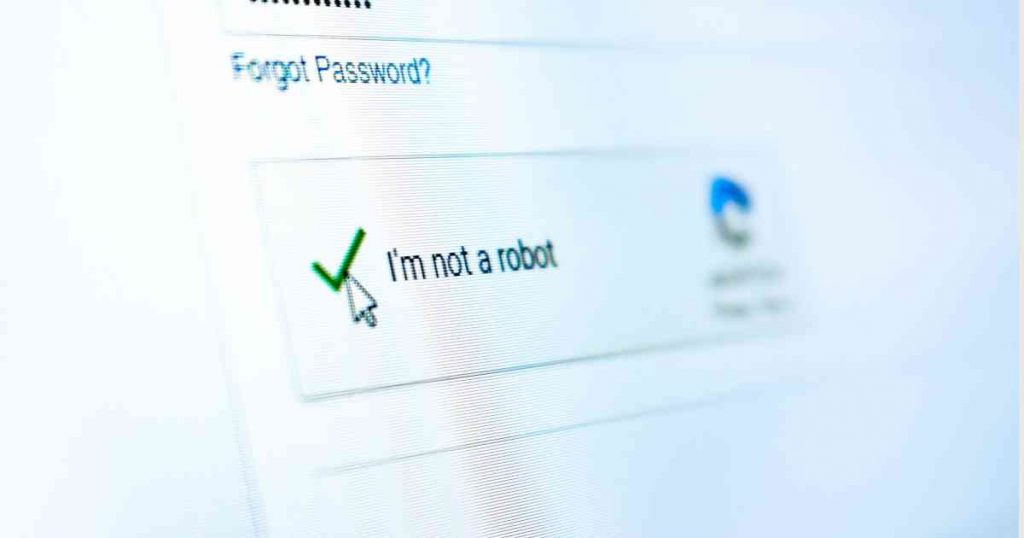You’ve seen them, you’ve solved them, but have you ever stopped to wonder how CAPTCHAs actually work? These seemingly simple puzzles are a crucial line of defense in the digital world, protecting websites from bots and automated attacks. But there’s more to CAPTCHAs than meets the eye.
What Exactly is a CAPTCHA?
CAPTCHA is an acronym that stands for “Completely Automated Public Turing test to tell Computers and Humans Apart.” Despite its complex-sounding name, the purpose of a CAPTCHA is quite straightforward: it’s designed to figure out if you are a human or a computer program. The concept was introduced in 2000 by researchers Luis von Ahn, Manuel Blum, and Nicholas J. Hopper from Carnegie Mellon University, along with John Langford from IBM.
You’ve likely encountered CAPTCHAs when logging into websites, filling out online forms, or even making online purchases. They usually appear as a small test that you must pass to prove you’re human. These tests can come in various forms. The most common one involves typing out distorted letters and numbers that appear on the screen. The idea is that a human can easily read these distorted characters, but a computer program, like a bot, would find it challenging.
CAPTCHAs serve a vital role in internet security. They protect websites from being abused by automated programs or bots. These bots are often designed to carry out tasks like spamming a service, scraping data, or brute-forcing passwords. By adding a CAPTCHA, websites can ensure that their services are used by actual humans, thereby providing a first line of defense against various types of online abuse.
So, in simple terms, a CAPTCHA is like a security guard that stands at the entrance of a website, asking a simple question to make sure you’re a human and not a robot trying to sneak in.
How Do CAPTCHAs Work?
In a standard CAPTCHA test, the distorted text is generated randomly and presented to the user. The user then has to type these characters into a form field. Once you enter the correct sequence and hit the “Submit” or “Verify” button, the website confirms you’re a human and allows you to proceed. This is the most traditional form of CAPTCHA, and it’s still widely used today. Although there are several other types of CAPTCHAs too, that we have explained below.
The Role of Distortion
The reason the text is distorted is to throw off bots. While humans have the ability to recognize distorted characters, bots find it challenging. They are programmed to read standard text, so when they see distorted text, they can’t interpret it. This is why you, as a human, have to step in and type the correct characters.
Time Limits
It’s worth noting that CAPTCHAs usually have a time limit. If you don’t complete the test within a certain period, it will expire, and you’ll have to start over. This is another feature designed to make it difficult for bots to get through.
Types of CAPTCHAs:
Advanced Versions: reCAPTCHA
Over time, CAPTCHAs have evolved to become more sophisticated. One advanced version you might have encountered is Google’s reCAPTCHA. Instead of just typing text, you might be asked to select all the squares in a grid that contain a certain object, like a traffic light or a fire hydrant. This task is relatively easy for a human but extremely difficult for a bot.
Audio CAPTCHAs
For those who have difficulty seeing or reading, many CAPTCHA systems offer an audio option. In this version, you’ll hear a sequence of numbers or letters and will be asked to type them in. This makes CAPTCHAs accessible to users with visual impairments.
Interactive CAPTCHAs
Some websites have started using interactive CAPTCHAs that require users to drag and drop objects into a puzzle. For example, you might have to drag a piece of fruit into a basket among a set of random items. The way you interact with these elements — how long it takes you, the paths you move along, the choices you make — provides additional data points that help the system determine whether you’re human.
Behavioral Analysis
Some modern CAPTCHAs don’t even require you to enter text or select images. They analyze your behavior as you interact with the website. For example, the way you move your mouse may be enough to prove you’re a human. These are known as “No CAPTCHA” tests, and they’re becoming more common.
CAPTCHAs on Mobile Devices
With the increasing use of smartphones, CAPTCHAs have had to adapt. On a mobile device, you might encounter CAPTCHAs that take advantage of the device’s features, like its touchscreen. You could be asked to trace a shape or connect dots in a specific order. These tasks are easy for a human but remain challenging for a bot, especially one that’s not optimized for touch interactions.
Multi-Factor Authentication and CAPTCHAs
Some websites use CAPTCHAs in conjunction with other forms of verification, like two-factor authentication (2FA). In such cases, even if a bot somehow manages to solve the CAPTCHA, it would still need to bypass the additional security layer, making the system even more secure.
The Role of Machine Learning
As machine learning technologies advance, there’s a race between making CAPTCHAs more complex and the development of bots that can solve them. Some bots now use machine learning algorithms to interpret distorted text or even recognize basic objects in images. This has led to the development of even more advanced CAPTCHAs that use dynamic elements, changing in real-time, to thwart such bots.
The Future: Biometric CAPTCHAs?
As technology continues to evolve, we may soon see the introduction of biometric CAPTCHAs, which could use fingerprint or facial recognition to verify identity. While this could offer a higher level of security, it also raises important questions about privacy and data protection.
Conclusion
CAPTCHAs act as a crucial barrier that keeps automated bots at bay, safeguarding the integrity of websites and online services. As technology advances, CAPTCHAs continue to evolve, becoming more sophisticated to meet new challenges. So, the next time you encounter one of these puzzles, take a moment to appreciate the complex technology that works tirelessly to make the internet a safer place for us all.



